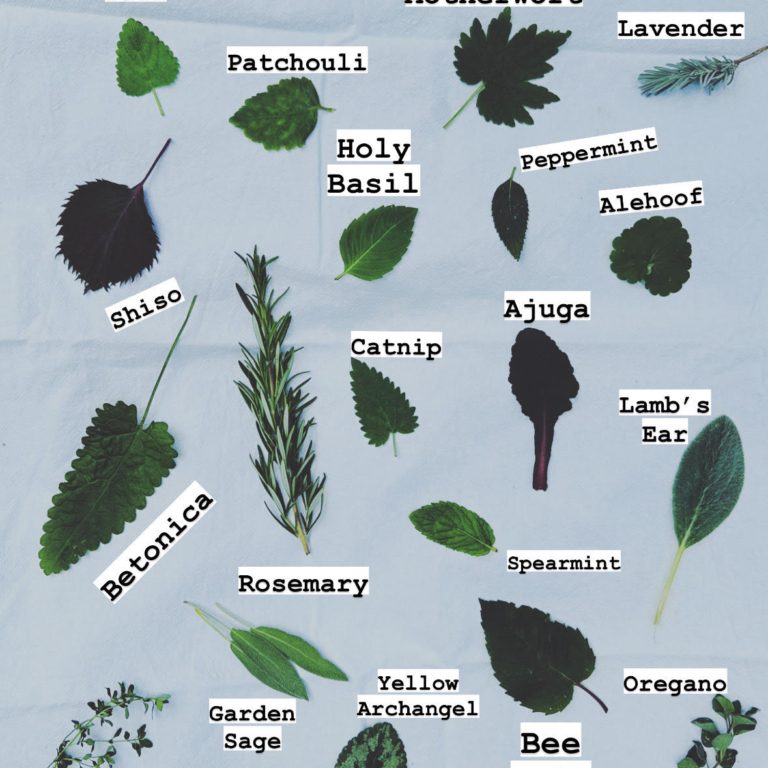The Mint Family
Frank Cook was the first person to tell me that plants are grouped into families. Plant families? The idea got me excited, so he turned me on to Thomas Elpel’s Botany in a Day which really opened my eyes to seeing the patterns that plants share and how this can help with identification and understanding of the plant’s habit and gifts. If you’d like to learn more about the 600 plus plant families, which I highly recommend if you are wanting to deepen your identification skills of the green world, take Marc Williams’ Botany Everyday online course.
In North America, Lamiaceae is the name of the mint family, and it is one of the most common plant families we have. In our gardens, next to the Asteraceae family, a majority of our plants are going to be mint relatives. Many of them are cultivars of a same genus, like Salvia for example. Others are species that cross-breed, which is an unusual characteristic the mint family has. There are over 200 genera of mint family members in North America and worldwide about 7,000 species. Remember, how many species of humans are there? One.
In the 1970’s, the family was renamed Lamiaceae from Labiateae. Apparently some female botanists did not like having a plant family named after their genitalia when there was not male equivalent. (Like Scrotuminanceae, maybe?)
All the same, a mint is a mint. Does it have a square stem? Are the leaves opposite? Is it aromatic? Then it is most likely a mint family herb. The flowers are irregular and bisexual and have 5 united petals, 2 of the lobes going up and 3 of them facing down, looking like a mouth with fancy lips. 4 stamens peak out of its throat, 2 long, and 2 short. The 5 sepals (also called the calyx) are fused and remind me of a crown that’s been squeezed. 4 seeds, called nutlets, will form once the flower has been fertilized.
But not to get to technical. I just hope to inspire you to look around and make the connection of how many of the plants you use for medicine and beauty are in this abundant family.
The seeds are so neatly packaged in their nutlets, First Nations people said this cluster represented the four directions.
I spent 5 minutes gathering some leaves from outside my door and look how many mints there were! This photograph doesn’t include the dozens more that are growing on our land, both wild and cultivated. Mints do that thing- they spread! By seeds or roots, so watch out. Not all mint family members spread, but enough do that it’s smart to be cautious when planting, unless you have endless room. Mints also warm the body, which allows blood to flow more freely. It’s kind of like what they do on land too, flow freely.
 Here is a little something about each of the fellas in the photo:
Here is a little something about each of the fellas in the photo:
Lemon Balm, Melissa officinalis, fave tea herb for happy heart and healthy mind.
Motherwort, Leonurus cardiaca, calms anxiety, slows down the heartbeat
Patchouli, Pogostemon cablin, signature hippy scent.
Lavender, Lavendula angustifolia, essential oil great for homemade cleaning sprays.
Holy Basil, Occimun africanum, also called Tulsi, revered herb of India.
Shiso, Perilla frutescans, gives pickled sushi ginger its pink color.
Alehoof, Glechoma hederacea, one of the original beer making herbs.
Catnip, Nepeta cataria, best soothing tea for a baby’s discomforts.
Peppermint, Mentha piperita, drink as an after dinner digest while you eat carrot cake.
Ajuga reptans, Bugleweed, ground cover extraordinaire and medicinal.
Lamb’s Ear, Stachys byzantina, leaf used as a wound dressing.
Betonica officinalis, Hedgenettle, tea for healing trauma-induced disconnect.
Rosemary, Salvia rosemarinus, make sure you cover me in this holy one at my funeral.
Spearmint, Mentha spicata, this Kentucky Colonel cultivar makes the best tasting tea imo.
Thyme, Thymus vulgaris, inhale this herb as a steam for sinus support.
Garden Sage, Salvia officinalis, eat this leaf the moment you notice a sore throat.
Yellow Archangel, Lamium galeobdolon, never plant this ornanmental or you’ll regret it.
Beebalm, Monarda didyma, the best smelling mint in my garden.
Oregano, Origanum vulgare, stick the leaves up your nose so you don’t get the Covid.
I could go on and on about Lamiaceae but I need to make dinner. Here are a few more family friends to mention first as I wouldn’t want to hurt their feelings by leaving them out:
Anise Hyssop
Coleus
Germander
Hyssop
Lycopus
Marjoram
Pennyroyal
Pycnathemum
Savory
Self Heal
Skullcap
Stonemint
What mint family member do you have growing who is not listed here?

An example of 5 mints growing together: Holy Basil, Shiso. Rosemary, Lavender and Spearmint


